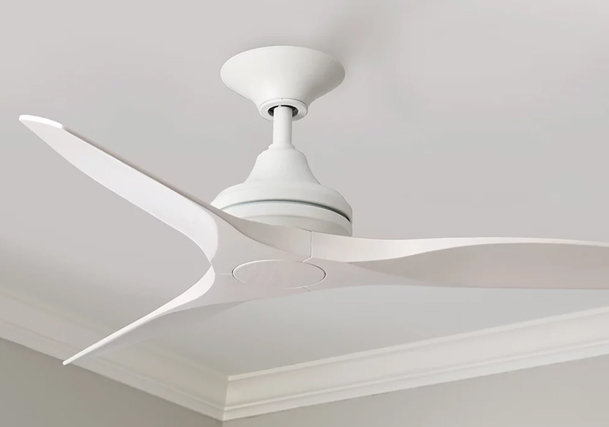Exploring the Must-Have Features for Farmhouse & Rustic Fans: A Complete Buying Checklist
Welcome all rustic and farmhouse enthusiasts! Are you ready to embark on a delightful journey to make your dream home come true? Whether you’ve been swooning over Joanna Gaines’ magnificently designed spaces or yearning for the charm of an old-world farmhouse, we’ve got just what your heart desires. In this ultimate buying checklist, we’ll explore the must-have features that will not only transform any house into a rustic haven but also leave you feeling like you’re forever in the embrace of nature. So buckle up and prepare to discover how to curate your ideal farmhouse aesthetic while keeping functionality at the forefront of your design choices – let’s get started!
What to Consider when Buying a Farmhouse & Rustic Fan
When shopping for a farmhouse or rustic fan, it’s important to prioritize features that will make the fan practical and comfortable. Here are some key considerations:
Installation height: fans with a low installation height are easy to set up and move around, but they won’t be as effective at blowing air. Fans with a high installation height are better for large rooms or areas that require a lot of airflow.
Max user weight: fan motors can usually handle a heavier user, but be aware that the thicker the blades become, the more noise the fan will make. The weight of the fan should also be considered when selecting a location for it.
The angle of inclination: fans with an inclined angle can move more air per rotation than those with a horizontal blade sweep. This is beneficial if you want to circulate air in specific areas of the room or have a large area to cover (like a kitchen).
Blade size: small fans with smaller blades tend to be less noisy and easier to carry, but they may not move as much air. Larger fans with larger blades are more powerful and can be more effective at cooling large spaces, but they can also be louder and heavier.
Sweep radius: fans with a wider sweep radius cover more ground and move more air, but they can also be more difficult to control.
Portability: since fans rely on air circulation to work, they’re not as portable as other home appliances. Consider how easy the fan will be to transport and store.
How to Tell If a Fan Is Genuine or Not
When shopping for a fan, it is important to consider the must-have features for Farmhouse & Rustic Fans. Here are four tips to help you determine if a fan is genuine or not:
1. Is the fan made of wood?
If the fan is made of wood, it is likely genuine. Genuine fans are often more expensive than imitation fans, but they are worth it because they LAST longer and are built to withstand high winds.
2. Are the blades detachable?
If the blades are detachable, likely, the fan is not genuine. Genuine fans often have fixed blades which cannot be replaced. A detachable blade on a fan aims to clean it easily.
3. Is the motor covered by a cover?
Genuine motors on fans typically have covers so you can protect them from dust and moisture. Imitation motors may be wired with exposed wires, making them less safe and durable.
4. Does the company offer a warranty?
If the company offers a warranty, their fans are likely of high quality and authentic. Many imitation fans do not offer warranties because they believe their products are better quality than authentic ones.
Types of Fans
There are several types of fans, each with their specific uses. Below is a list of popular types of fans and the features that make them essential in any home.
Window Fans
Window fans are perfect for homes with large windows. They can move much air and provide ample ventilation, especially in hot climates. Some window fans also have oscillating features, stimulating airflow throughout a room.
Portable Fans
Portable fans are perfect for summertime when you want to stay cool but don’t have access to an air conditioning unit. They’re lightweight and easy to take wherever you go, making them great for backyard parties or picnics. Portable fans also come equipped with oscillating and rotating features, so you can customize the airflow in whichever way works best for your room.
At-Home Heaters & Air Conditioners
An at-home heater or air conditioner is essential if you live in a warm climate. Heaters help keep your house warm during wintertime, while air conditioners help lower temperatures during hot days or nights. Both heaters and air conditioners come in various sizes and capacities, so finding the one that’s right for your home is easy.
Factors to Consider When Buying a Fan
When shopping for a fan, there are a few key factors to consider. First, what kind of fan do you need? A farmhouse or rustic fan will require different features.
Secondly, what kind of ceiling are you working with? Fan blades extending below the ceiling can create a lot of airflow in larger rooms but are less effective in smaller spaces. Likewise, fans with taller blades may be more effective on higher ceilings but could become blocked by furniture or plants on lower ceilings.
To determine the needed wattage for your fan, measure the ceiling height and blade span in feet. Calculate the watts required by multiplying this figure by 0.7 (the average horsepower rating for a standard ceiling fan). For example, if your ceiling height is 12 feet and your blade span is 9 feet, you would need a fan with an Intel power rating of 705 watts or greater to achieve adequate airflow. Be sure to also check your chosen model’s weight and width requirements; some fans are quite large and may not fit through standard doorways.
Conclusion
If you want to add some rustic detail or farmhouse-style accents to your home, read on for a comprehensive guide to the must-have features of these styles. From ceiling beams and cabinetry to artwork and plaid furniture, we cover everything you need to make your project successful. So if you’re ready to branch out from the traditional look of your home, keep reading for our tips on finding the perfect pieces for your Farmhouse & Rustic Interior design project!

